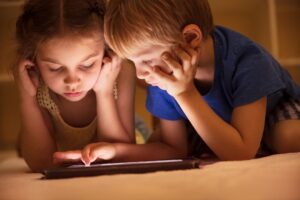In my journey as a childhood educator, I’ve discovered the unparalleled power of books in opening young minds to the vast world of emotions and empathy.
Storytelling is not just an educational tool but a bridge to understanding complex feelings, fostering connections, and nurturing empathy among children as young as three months to five years old.
Here’s how I’ve woven the magic of storytelling into the fabric of our daily learning, transforming storytime into a journey through emotions and empathy.
The Power of Storytelling
Storytelling offers a unique way to engage young learners with the emotional experiences of others, laying the groundwork for empathy.
Emotional Engagement Through Narratives
From what I’ve experienced, stories have a unique way of engaging children’s emotions, allowing them to connect with characters and experiences beyond their own.
It’s through these connections that children begin to understand and share the feelings of others.
Stories as Mirrors and Windows
I’ve found that stories serve as mirrors reflecting children’s own experiences, and as windows into the lives of others.
This dual role is instrumental in teaching children about diversity, understanding, and acceptance.
Selecting Stories for Emotional Learning
The choice of books is crucial in guiding children through the landscape of emotions and empathy.
Themes of Emotion and Empathy
In my work, selecting stories that explicitly deal with emotions or present challenges requiring empathy has been key.
I’ve personally seen how books addressing themes like friendship, fear, joy, and sadness can provoke deep discussions about feelings.
Diversity in Storytelling
I’ve made it a point to include stories from a variety of cultures and perspectives. This approach has broadened children’s understanding of the world, teaching them that while our experiences might differ, our emotional responses can be very similar.
Exploring Resilience and Overcoming
I always look for stories that showcase resilience and overcoming challenges. These narratives are powerful because they teach children that it’s okay to face difficulties.
Kids learn that strength and growth come from working through the challenges. It’s inspiring to see children relate these themes to their own lives.
Celebrating Differences
I’ve incorporated books that celebrate differences, be it in abilities, backgrounds, or interests.
These stories open children’s eyes to the beauty of diversity and teach them to embrace and celebrate what makes each of us unique. It’s a joy to watch empathy grow from these discussions.
Addressing Fear and Anxiety
I’ve chosen stories that address fears and anxieties in a gentle, understanding way. Reading about characters who face and overcome their fears helps children feel less alone with their own worries. It’s rewarding to facilitate conversations that allow children to express and manage their anxieties.
Integrating Storytelling into Daily Learning
Storytelling is a versatile tool that I’ve woven into our curriculum in various ways.
Storytime Discussions
I’ve encouraged open-ended discussions after storytime, asking questions like “How do you think the character felt?” or “What would you have done?” These conversations have been my secret weapon in developing empathy and emotional literacy.
Role-Playing and Dramatization
I’ve found role-playing scenes from the books to be an effective strategy. By acting out stories, children explore emotions and perspectives firsthand, deepening their empathy and understanding.
Creative Storytelling Activities
Encouraging children to create their own stories has fostered creativity and personal expression.
I’ve seen how storytelling projects, whether through drawing, writing, or performing, allow children to explore and share their own emotions and experiences.
Supporting Emotional Development Through Books
Books are a tool for more than just academic learning; they support the holistic emotional development of young learners.
Books as Tools for Emotional Expression
I’ve used books as a springboard for children to express their own emotions. Story-related art projects, journaling activities, or discussions about personal experiences related to the story’s theme have opened avenues for emotional expression and sharing.
Building Empathy Through Shared Reading Experiences
Shared reading experiences, where children listen to stories together, have fostered a sense of community and shared emotional journey.
It’s through these shared experiences that children learn to empathize with others, recognizing and respecting different emotional responses.
Reflecting on the Impact of Storytelling
Reflecting on my years of integrating storytelling into our learning, the impact on children’s emotional development and empathy has been profound.
Observations and Reflections
In my journey in childcare, regularly observing children’s responses to stories and their interactions during story-related activities has provided insights into their emotional growth and development of empathy.
This ongoing reflection has been essential in tailoring storytelling practices to meet the needs of each child.
The Lasting Influence of Storytelling
I’ve gathered countless anecdotes and moments where storytelling has sparked significant emotional growth in children. Whether it’s a quiet child opening up about their feelings, or a group resolving a conflict with newfound understanding, the stories we’ve shared have played a pivotal role in these developments.
Final Thoughts
In my experience, using storytelling to explore emotions and empathy has been one of the most rewarding aspects of my role as an educator.
Stories have the power to transcend the ordinary, opening doors to new worlds of emotional understanding and connection.
By carefully selecting stories and integrating them into our learning in meaningful ways, we can build bridges of empathy that span far beyond the classroom.
It’s a journey that not only enriches the lives of the children I teach but also continuously reshapes my understanding of the power of storytelling in fostering emotional health and empathy.












